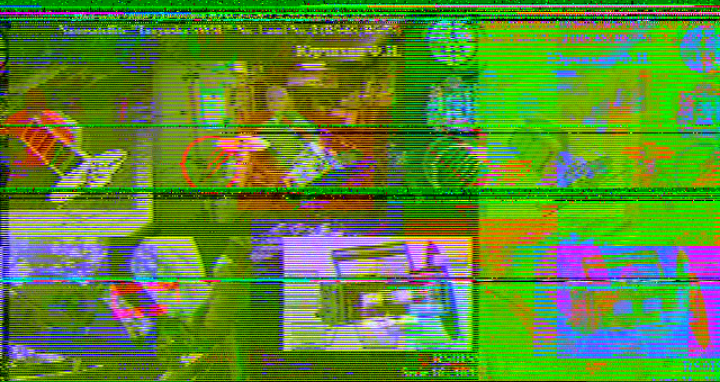October ISS SSTV
The International Space Station had some great passes from 04-08 October. On 05 October I was ale to go up and receive one. In this post I will just give a short recap and post my picture.

Background
The International Space station flies at about 400km overhead with a speed of 7.660km/s blazing across the sky. Since the 1990s, amateur radio has had a prominent place onboard. The ISS has a period of about 1.5 hours - every time it makes a complete rotation around the earth. Its path is sinusoidal and non sun-synchronous however; so often its ground track changes on earth.
You can receive the signals day or night and from any angle above about 12 degrees. We use heavens above to find passes.
The ISS transmits Slow-Scan Television, an almost fax-machine sort of radio modulation. Series of tones correspond to colors, and decoders can take this audio and convert it to images. The full image takes about 1 minute.
Method
We saw upcoming passes on the heaven’s above link (above). I picked a nighttime pass that had a high angle (72 degrees max elevation) for the best possible transmission. I received the signal with a directional Arrow antenna and a handheld Kenwood-THD72A. We have a fully functional satellite rig, but it is personally a lot more fun to catch the signal with your arm.
I got to a spot with high elevation, had my radio on standard squelch, and opened the Robot36 app on my phone. This app (free) decodes SSTV and is super useful in these situations. I found the start azimuth (SSE), pointed my antenna, and waited.
We initially saw the ISS zip by and assumed we weren’t on the right frequency. But about 3 seconds later, it came in full blast! I enjoyed “leading” the satellite with my antenna to receive the signal and got a pretty good reception out of it.
Conclusion

My SSTV Capture
SSTV is a great way to get someone into the hobby. It doesn’t require a license, shows off the space station, and gives a small taste of what amateur radio is like, all within 15 minutes. It requires minimal equipment and gives a glimpse into satellite telemetry; a great stepping stone for budding technicians.